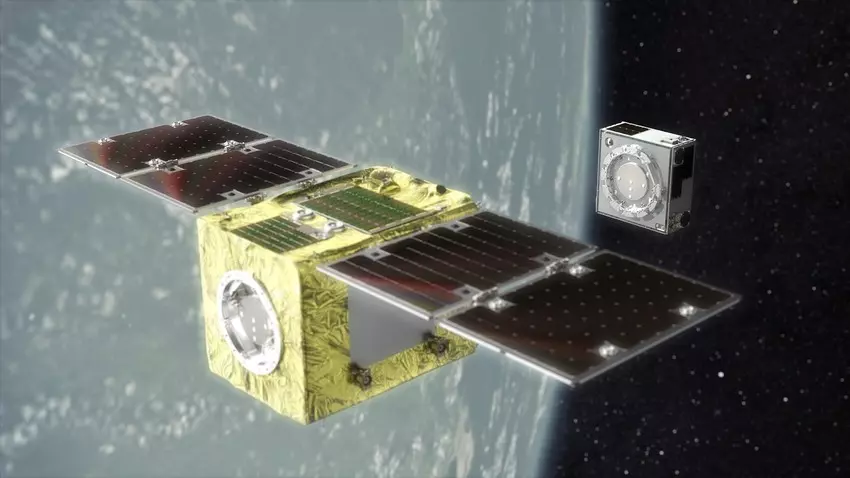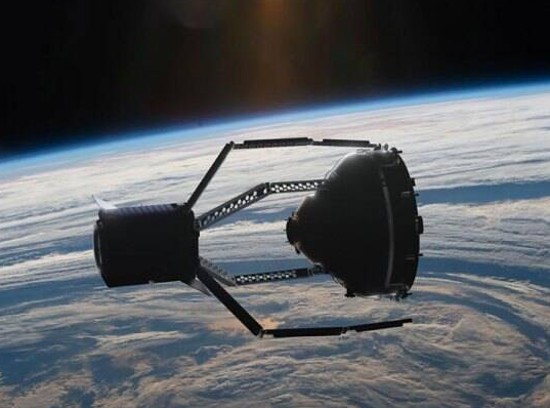The Union of Concerned Scientists as of January of last year noted there were 6,542 satellites orbiting Earth. Of these 3,170 were inactive. This was disputed by the United Nations Office for Outer Space Affairs which stated the actual number was 7,389. And both these numbers didn’t include much of the new mega-constellations of telecommunications satellites being launched by SpaceX which has averaged 50 every two weeks.
If half of these satellites are no longer functioning as the Union of Concerned Scientists has noted, they represent a growing threat to anything we launch in the future, to humans on space stations in low-Earth orbit, and to people down here on Earth. Defunct space objects aren’t in outer space landfills. They are travelling at orbital velocities that can puncture the International Space Station (ISS) or any of its successors. And when deorbited in an uncontrolled manner they may not fully burn up in the atmosphere and become a danger to us on the ground.
The problem of space garbage goes well beyond inoperative satellites. We have spent booster rockets. (One is expected to hit the Moon next month.) We have debris inadvertently discarded during human extravehicular activities performed throughout the building of the ISS and its continued maintenance.
And then we have the added danger coming from space weapons being tested. Russia, China, and India have developed weapons designed to bring down satellites. This militarization of low-Earth orbit where we could see countries shooting down or disabling enemy satellites adds a new wrinkle to the growing problem. Just how bad could this get? Recently, Russia used a weapon test to destroy a satellite causing more than 1,500 pieces of space debris. The ISS had to move its orbit, and the crew sought safety in the attached Dragon and Soyuz capsules. A 2013 science-fiction movie, Gravity, depicted what could conceivably happen because of flying space debris from a satellite breaking up with pieces colliding with the ISS.
According to the European Space Agency (ESA) Space Debris Office, the kind of space junk created in destroying a satellite as Russia did represents a more significant threat than just deorbiting spent satellites. Holger Krag, who heads up the agency’s space debris initiative described the extent of damage even a tiny fragment of space junk could cause.
“The energy contained in a one-centimetre particle hitting a satellite at that velocity roughly corresponds to an exploding grenade. The consequences of such a hit mean satellite failure, for larger objects, even satellite destruction and fragment generation, which, again, then has environmental consequences.”
That’s why we need space garbage trucks that can clean up the mess we are creating overhead. So what’s been done in the past and what’s planned for the near future?
- 1. A British-designed test space-debris capture satellite was launched from the ISS in 2018. It used a net, drag sail and harpoon and navigated using lidar to find debris to grab space garbage. Its limitation was that it could only capture and deorbit one piece of garbage taking itself down as well.
2. In March of last year, Astroscale, a Japanese start-up was the first to demonstrate a method of capturing and removing space debris. Called ELSA-d, it tested a technology that would use magnetic docking to capture, control, and release for deorbit spent satellites.

3. China appears to have entered the garbage truck space race without informing much of the world. One of their satellites was spotted in January grabbing a decommissioned satellite and launching it away from its existing orbit. According to an Indian Express article appearing on February 26, 2022, China’s SJ-21 satellite changed its obit to approach the Compass-G2, attaching itself to it and then catapulting it into oblivion.
4. ESA has plans for its first space garbage truck. The ClearSoace-1 mission is planned for 2025. ClearSpace will first target an abandoned upper stage of a booster that has been in space since 2013. Unlike previous one-off test missions, the satellite will be capable of targeting more than one object for removal becoming the first space garbage truck capable of dealing with multiple pieces of orbiting junk.

This is a technology that cannot come soon enough considering the mega-constellations of telecommunications and GPS satellites that are planned for launch within this decade. And one would think there should be a fee paid to those collecting the garbage left in space by others who would pay for this new service. Of course, this means we will be launching a fleet of space garbage trucks in the coming years. Let’s hope none of them break down and become just another addition to the satellite graveyard we are creating in near-Earth orbit.










[…] Read more […]